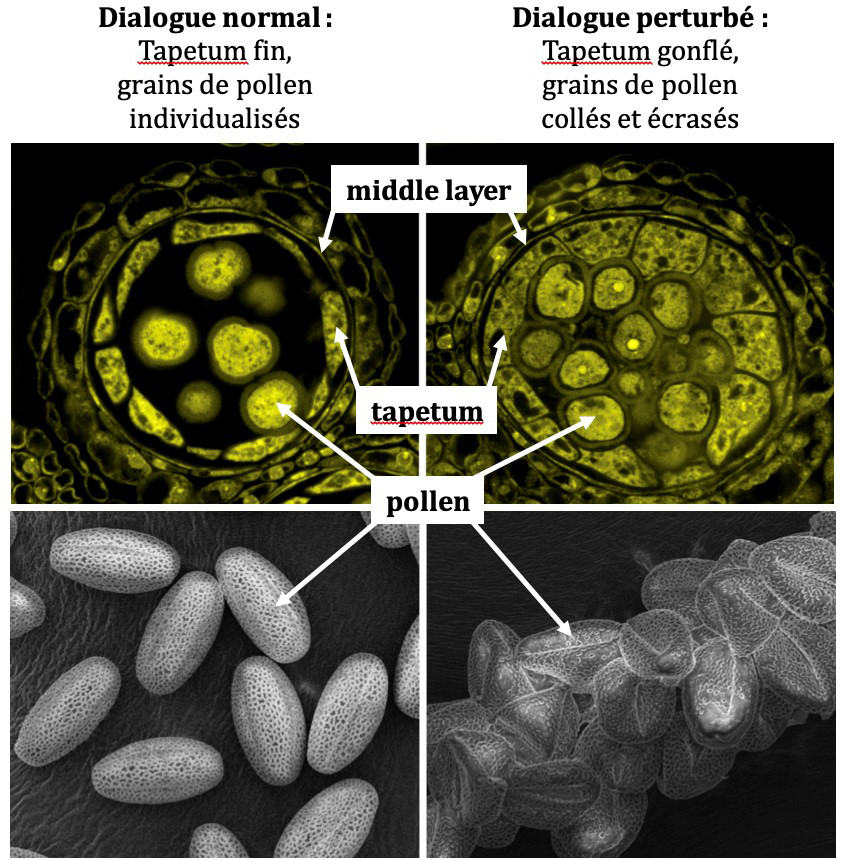Publication of the RDP in the journal PNAS on May 24, 2022. CNRS-INSB communication on May 30, 2022.
Pollen viability depends on a tough external barrier called the pollen wall. Pollen wall components are produced by tapetum cells, which surround developing pollen grains within the anther. Precise coordination of tapetum activity with pollen grain development is required to ensure effective pollen wall formation. Here, we reveal that this is achieved through a multidirectional dialogue involving three distinct cell types. We show that peptide precursors from the tapetum are activated by proteases produced stage specifically in developing pollen grains. Unexpectedly, we found that activated peptides are perceived not in the tapetum, but in the middle layer, which encloses the developing tapetum and pollen grains, revealing an unsuspected role for this enigmatic cell layer in the control of tapetum development.
The surface of pollen grains is reinforced by pollen wall components produced noncell autonomously by tapetum cells that surround developing pollen within the male floral organ, the anther. Here, we show that tapetum activity is regulated by the GASSHO (GSO) receptor-like kinase pathway, controlled by two sulfated peptides, CASPARIAN STRIP INTEGRITY FACTOR 3 (CIF3) and CIF4, the precursors of which are expressed in the tapetum itself. Coordination of tapetum activity with pollen grain development depends on the action of subtilases, including AtSBT5.4, which are produced stage specifically by developing pollen grains. Tapetum-derived CIF precursors are processed by subtilases, triggering GSO-dependent tapetum activation. We show that the GSO receptors act from the middle layer, a tissue surrounding the tapetum and developing pollen. Three concentrically organized cell types, therefore, cooperate to coordinate pollen wall deposition through a multilateral molecular dialogue.

Illustration and figure credits: Jekaterina Truskina
Reference: A peptide-mediated, multilateral molecular dialogue for the coordination of pollen wall formation. Truskina J, Brück S, Stintzi A, Boeuf S, Doll NM, Fujita S, Geldner N, Schaller A, Ingram GC. PNAS, May 24,2022.
DOI : https://doi.org/10.1073/pnas.2201446119






